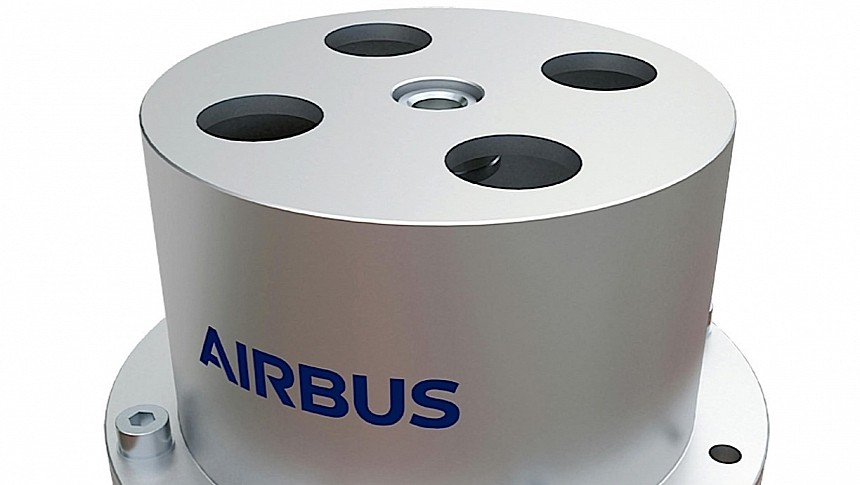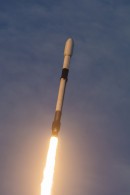Although it is impossible to say precisely how many satellites are presently in orbit, estimates point to at least 8,900 floating out there in the space around our planet. Of that number, only about half are in working order. The rest, well, you can call that space junk.
Although worrying, their presence up there is not something that seems to concern us terribly at the moment. After all, given our current level of technological development, it's not like hundreds of spaceships heading out into the solar system have to dodge dead or live satellites on their way out.
At least, that's probably how the problem must appear to most of us average Joes. For the companies in the business of launching and operating satellites, such a large number of floating objects, some of them no longer in their original orbits, is a literal nightmare. Especially the ones that are tumbling.
You see, dead satellites don't only spin aimlessly around our world on various orbits, they also tumble. That's something that routinely happens to dead pieces of space hardware, more specifically the ones located in low-Earth orbit, due to orbital flight dynamics.
The rather uncontrolled movement is not a problem in itself now, but it has the potential of getting in the way of future debris removal missions – yes, there are several of them being planned for the coming years. That's because a tumbling satellite is like an unpredictable animal when approached, and can pose serious dangers to incoming spacecraft.
There is a workaround, invented back in 2021 by Airbus. It's called, fittingly, Detumbler, and its main goal is to prevent satellites, well, from tumbling.
The device is magnetic and tiny, as it weighs just 100 grams. It comprises a central rotor wheel, but also magnets meant to interact with our planet's magnetic field.
The thing can be attached to satellites and used to dampen a satellite's tumbling by inducing eddy currents that act like friction torque. When the satellite is operating normally though, the Detumbler does nothing more than use its rotor as a compass that follows Earth's magnetic field.
The hardware departed Earth on November 11, and it is now getting ready to be tested during a demo scheduled for early 2024. The satellite it will be used on is called Exo-0 and was made by a company called EnduroSat.
All of the above sounds great and all, but I see a major problem in all of this. The Airbus Detumbler is useless on the satellites that are already up there, tumbling themselves into oblivion, as there's probably no effective way it can be attached to them.
On the bright side, it could become a commonplace component for future satellites, making them easier to remove at the end of their lives.
At least, that's probably how the problem must appear to most of us average Joes. For the companies in the business of launching and operating satellites, such a large number of floating objects, some of them no longer in their original orbits, is a literal nightmare. Especially the ones that are tumbling.
You see, dead satellites don't only spin aimlessly around our world on various orbits, they also tumble. That's something that routinely happens to dead pieces of space hardware, more specifically the ones located in low-Earth orbit, due to orbital flight dynamics.
The rather uncontrolled movement is not a problem in itself now, but it has the potential of getting in the way of future debris removal missions – yes, there are several of them being planned for the coming years. That's because a tumbling satellite is like an unpredictable animal when approached, and can pose serious dangers to incoming spacecraft.
There is a workaround, invented back in 2021 by Airbus. It's called, fittingly, Detumbler, and its main goal is to prevent satellites, well, from tumbling.
The device is magnetic and tiny, as it weighs just 100 grams. It comprises a central rotor wheel, but also magnets meant to interact with our planet's magnetic field.
The thing can be attached to satellites and used to dampen a satellite's tumbling by inducing eddy currents that act like friction torque. When the satellite is operating normally though, the Detumbler does nothing more than use its rotor as a compass that follows Earth's magnetic field.
The hardware departed Earth on November 11, and it is now getting ready to be tested during a demo scheduled for early 2024. The satellite it will be used on is called Exo-0 and was made by a company called EnduroSat.
All of the above sounds great and all, but I see a major problem in all of this. The Airbus Detumbler is useless on the satellites that are already up there, tumbling themselves into oblivion, as there's probably no effective way it can be attached to them.
On the bright side, it could become a commonplace component for future satellites, making them easier to remove at the end of their lives.







